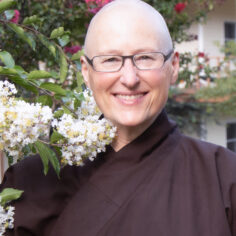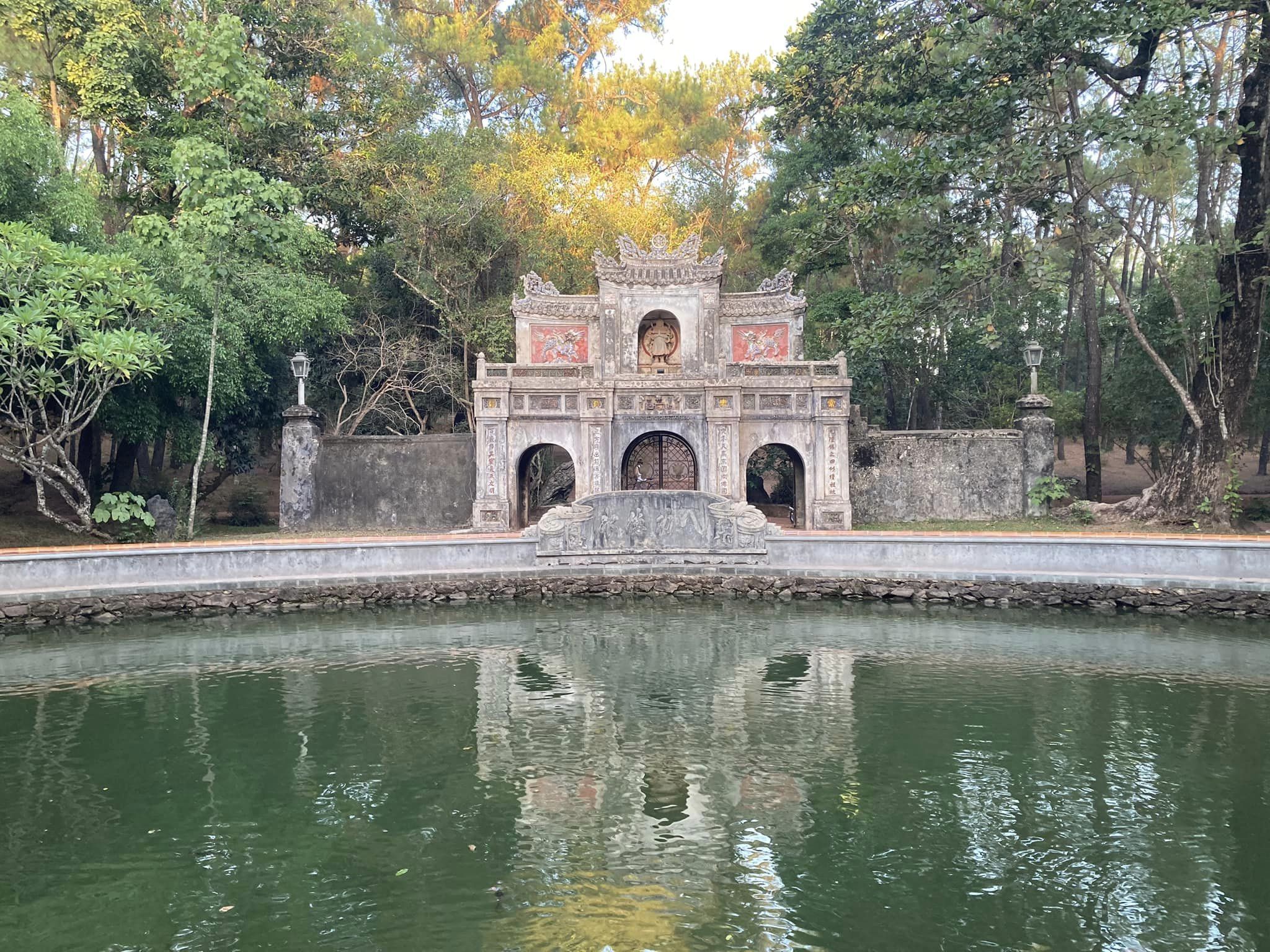Sister Trì Nghiêm describes her experience of Thầy as a truly great spiritual leader, and highlights the importance of embodiment of the practice of mindfulness as a foundation for true spiritual greatness.
The Parliament of the World’s Religions (PoWR) is a gathering to cultivate friendship and mutual understanding among the world’s spiritual traditions to achieve a more peaceful, just, and sustainable world. Its roots lie in the 1893 World’s Exposition in Chicago, Illinois,
Sister Trì Nghiêm describes her experience of Thầy as a truly great spiritual leader, and highlights the importance of embodiment of the practice of mindfulness as a foundation for true spiritual greatness.
The Parliament of the World’s Religions (PoWR) is a gathering to cultivate friendship and mutual understanding among the world’s spiritual traditions to achieve a more peaceful, just, and sustainable world. Its roots lie in the 1893 World’s Exposition in Chicago, Illinois, US, where the historic first convening of the Parliament created a global platform for interfaith dialog and engagement; many scholars pinpoint Swami Vivekananda’s talk there as a revelatory event that sparked the growth of Eastern religions in the West.
The connection between Thầy and the Parliament began in 1993 when Thầy, along with other spiritual leaders, contributed to a proposal that led to the publication of Towards A Global Ethic: An Initial Declaration, a powerful statement of unity in our increasingly fractured world. It reminds us that religious leaders today have a responsibility to their congregations and adherents to transform violence, oppression, and discrimination, and prevent war: “After two world wars and the end of the Cold War … the shaking to the foundations of communism and colonialism, humanity has entered a new phase of its history … humanity needs a vision of peoples living peacefully together.” In a virtual livestream in 2009, Thầy presented The Five Mindfulness Trainings as a viable, nonsectarian proposal for a global ethic at the PoWR in Melbourne, Australia. Now, when religion can be a more divisive than unifying force and young people increasingly identify as atheist or spiritual but not religious, the Plum Village tradition feels built for these times.
We were honored to be able to bring the teachings of Thầy and Plum Village to the PoWR again. Invited by the Elijah Interfaith Institute and representing Sister Chân Không who could not attend, Sister Lực Nghiêm of Plum Village, France, and Sister Trì Nghiêm of Magnolia Grove Monastery in Mississippi, US, joined a group of twenty religious leaders associated with the Institute convening for PoWR in Chicago in August 2023. This group met every afternoon during the Parliament to share and listen to one another’s experiences and perspectives as religious and spiritual leaders. Our contributions to the Parliament included offering the practice of Beginning Anew with the Earth, led by Sister Trì Nghiêm, during the Climate Repentance Ceremony, and another plenary session, Friendship Across Faiths Initiative, where Sister Lực Nghiêm spoke on the love we need to have in our hearts for dialogue to be possible, sharing examples and experiences of friendship from her peace pilgrimage to Ukraine in spring 2022.
We came together to explore the scope and meaning of a “religious leader,” and in that context we were all asked to write a paper about one of our “religious geniuses,” a term proposed by the directors of the Institute to describe the religious or spiritual leader who most inspires us. These two papers [Note from editor: find Sister Lực Nghiêm’s paper here] are our responses to that question.
More than 10,000 participants from over 200 diverse religious and spiritual traditions, and more than eighty nations attended the call to conscience at the 2023 Parliament of the World’s Religions in Chicago, August 14-18, 2023.
The following is a paper that was presented to the Elijah Interfaith Institute which took place as part of the Parliament.
Who is Thích Nhất Hạnh?
The late venerable Zen Master Thích Nhất Hạnh1 is many things to many people. To some, he is a peacemaker and social activist. To others, he is a revolutionary, a reformer of Buddhism, and a peaceful yet powerful advocate for social justice and environmental awareness. Humble monk, poet, scholar, humanist, artist and best-selling author, Thích Nhất Hạnh (called Thầy by his students) is recognized as a pioneering community builder and global spiritual leader.
He is widely recognized as the “Father of Mindfulness,”2 and the “Zen Master who fills stadiums” as he brought mindfulness to the West after being exiled from his native Vietnam during the war in the 1960s. Dr. Martin Luther King Jr. called him “an apostle of peace and nonviolence.” King also nominated him for the prestigious Nobel Peace Prize in 1967, saying “Thích Nhất Hạnh is a holy man, for he is humble and devout. He is a scholar of immense intellectual capacity. His ideas for peace, if applied, would build a monument to ecumenism, to world brotherhood, to humanity.”
Thích Nhất Hạnh is an extremely simple, humble person.
Thomas Merton3
After Thích Nhất Hạnh’s death in 2022, there was an outpouring of grief around the world. This is a testament to the enormous impact this humble spiritual leader had on so many people. Thầy’s life and teachings inspired millions to transform their suffering and touch more peace, freedom, and happiness in their lives.
To me and other students who knew him well, Thích Nhất Hạnh is above all a beloved teacher, a Bodhisattva,4 a highly realized being who devoted his entire life to relieving suffering in the world. His way of life and accessible teachings showed the way to true liberation.
Thích Nhất Hạnh believed that Buddhism should be a force for change5
From an early age, Thích Nhất Hạnh was determined to reform Buddhism. He strove to make Buddhism relevant and appropriate to our time6 so it could speak to people in a language they could easily understand, offering effective methods of practice which directly help individuals overcome the suffering in their lives.7 Known as the founder of Engaged Buddhism, Thích Nhất Hạnh and a corps of young social workers (the School of Youth for Social Service he created in the 1960s in Vietnam) took Buddhist meditation off the cushion, out of the temple, and into the world in order to serve those in need. They brought relief to victims of war, rebuilt destroyed villages, built schools, and offered food and education to the poorest. Thầy8 later introduced the term Applied Mindfulness, to underscore the need to apply Buddhist teachings and the practice of mindfulness in all areas of life, not just at home but also in the political arena, big business, the military, law enforcement, healthcare, science, and education. Thầy recognized the potential for Buddhist ethics9 and practices to address the many complex issues of our times and saw mindfulness not as a tool but as an entire way of life.
Our own life has to be our message.
Thích Nhất Hạnh, The World We Have
There is much we could say about Thầy’s many achievements, his reforms of Buddhism, his refusal to ignore the real suffering in the world, his bravery to speak out about injustice even at risk to his own life, his unshakable aspiration, and his life-long commitment to practice and peacemaking. There is no doubt that he was a hugely influential spiritual teacher, but his greatest achievement of all was Sangha building.
A true spiritual master inspires a truly spiritual community
I heard of Plum Village10 long before I had heard of Thích Nhất Hạnh. When I first went to Plum Village, it was to practice with the community, not to meet the master. What I did not realize at the time was that the Sangha and the master are the same thing. They inter-are. The term “interbeing” was coined by Thầy to describe the interdependent nature of all that is. To be is to inter-be. We cannot be by ourselves alone. This central Buddhist teaching on dependent co-arising (pratītyasamutpāda) underpins all Thầy’s teachings. This is because that is; if this is not, that is not. If we look deeply, we can find the teacher in the community and the community in the teacher. If we take our teacher, Thầy, out of Plum Village, it is no longer Plum Village, and if we take the Sangha out of the teacher, then Thích Nhất Hạnh is not who he is either. They rely on each other to manifest.
Just as a flower is made of non-flower elements such as rain and sun and soil, we, too, are made exclusively of non-self elements. No matter how hard we try, we cannot find a separate self. Thích Nhất Hạnh is made entirely of non-Thích Nhất Hạnh elements: his parents and ancestors, his culture and education, the experiences he has had in his life, and his students and worldwide community of practitioners.
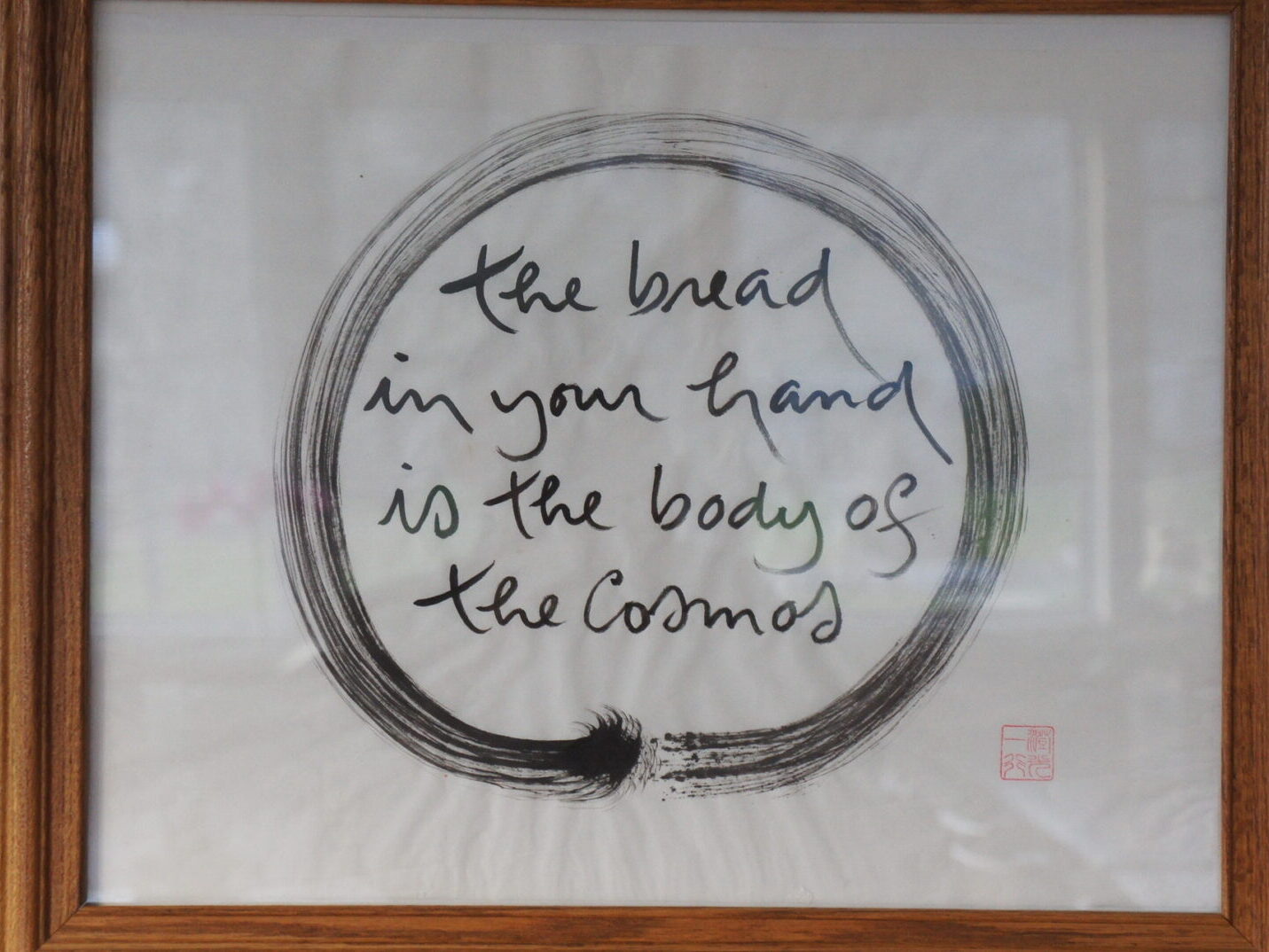
When I first went to Plum Village in the early 2000s, I witnessed something truly awe-inspiring. Watching the Plum Village monks and nuns walk up to chant before Thầy gave a Dharma talk was like watching a wide river in summer slowly advancing. There was no turbulence, only the faintest ripples in the water as the monks and nuns mindfully made their way down each side of the hall towards the stage. Relaxed, upright, unhurried individuals wearing long brown robes merged into a collective stream, a seemingly aimless, gentle flow of water. This was my first impression of mindfulness, my first experience witnessing the truly sacred.
The hall was filled with almost one thousand people, and yet there was a peace, a calm, a sense of oneness. One thousand people practicing mindful breathing is like a still, deep ocean. The energy is palpable. There is something in the air. Wherever there is the energy of mindfulness, we are in the presence of something truly awe-inspiring, truly sacred.11
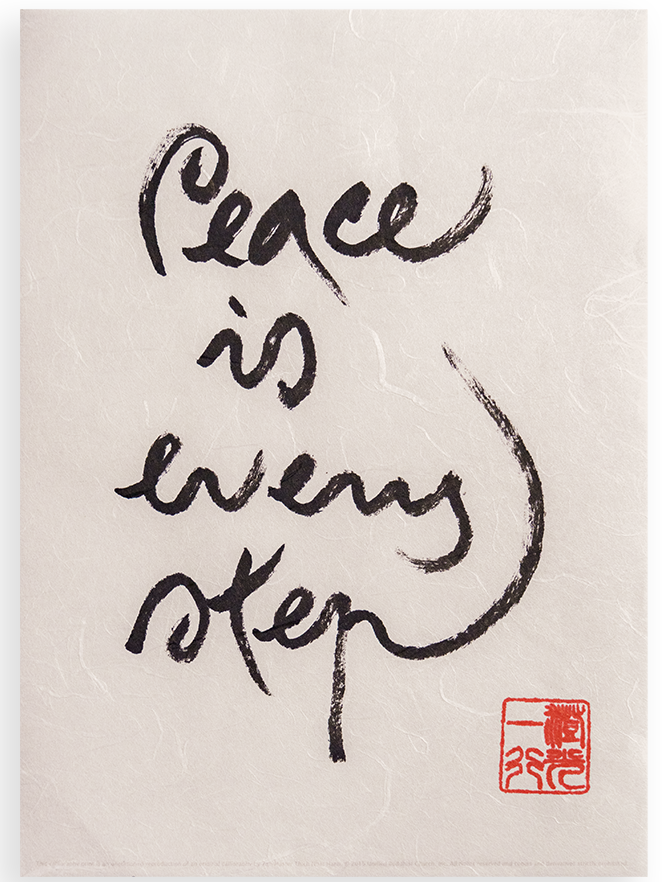
When Thầy came into the hall, or when he joined the circle before walking meditation, he was barely noticed—his quiet, mindful energy meant he hardly made a ripple in the air, his steps barely made a sound. One day, when the community was singing before walking meditation, I became aware of Thầy’s hand resting on my shoulder. He was right behind me, a benevolent smile on his face. Why didn’t I notice him approaching? Thầy moved through a crowd, went in and out, appeared and disappeared without a sound, without a disturbance, without a stir. When we truly embody mindfulness the way Thầy did, we are in complete harmony with ourselves and the world around us. There is no disturbance. We are aware of our body, our feelings, our mind, and of the objects of mind.12 Body and mind are one, anchored peacefully in the present moment. This is the miracle of true presence, the miracle of mindfulness. In moments like this, we touch the wonders of life; we touch peace. We are one with ourselves and with the entire cosmos.
Just the way he opens the door and enters a room demonstrates his understanding. He is a true monk.
Thomas Merton
These moments are what Thầy calls “touching nirvana,” a moment of enlightenment. He reminds us that nirvana is not something in the distant future, not in a distant place, and not a permanent state. We can touch it right here and right now. This is what makes Thầy’s teachings so appealing and accessible—the assurance that anyone can touch nirvana at any moment. With every mindful breath, every mindful step, we can touch the Pure Land of the Buddha, the Kingdom of God, Heaven on Earth. The wonders of life become available to us. As Thầy said, “The Kingdom of God is available to us, the question is if we are available to it.”
What drew me to Thầy and Plum Village?
The incredible healing and transformation I experienced in just seven days on my first retreat in Plum Village, one year after my sister died in a plane crash, bordered on the miraculous. I was mourning my sister deeply and had become disembodied, disconnected from myself. After a short week of retreat in Plum Village, I felt that I had finally come back from outer space and had landed on earth. I had arrived.
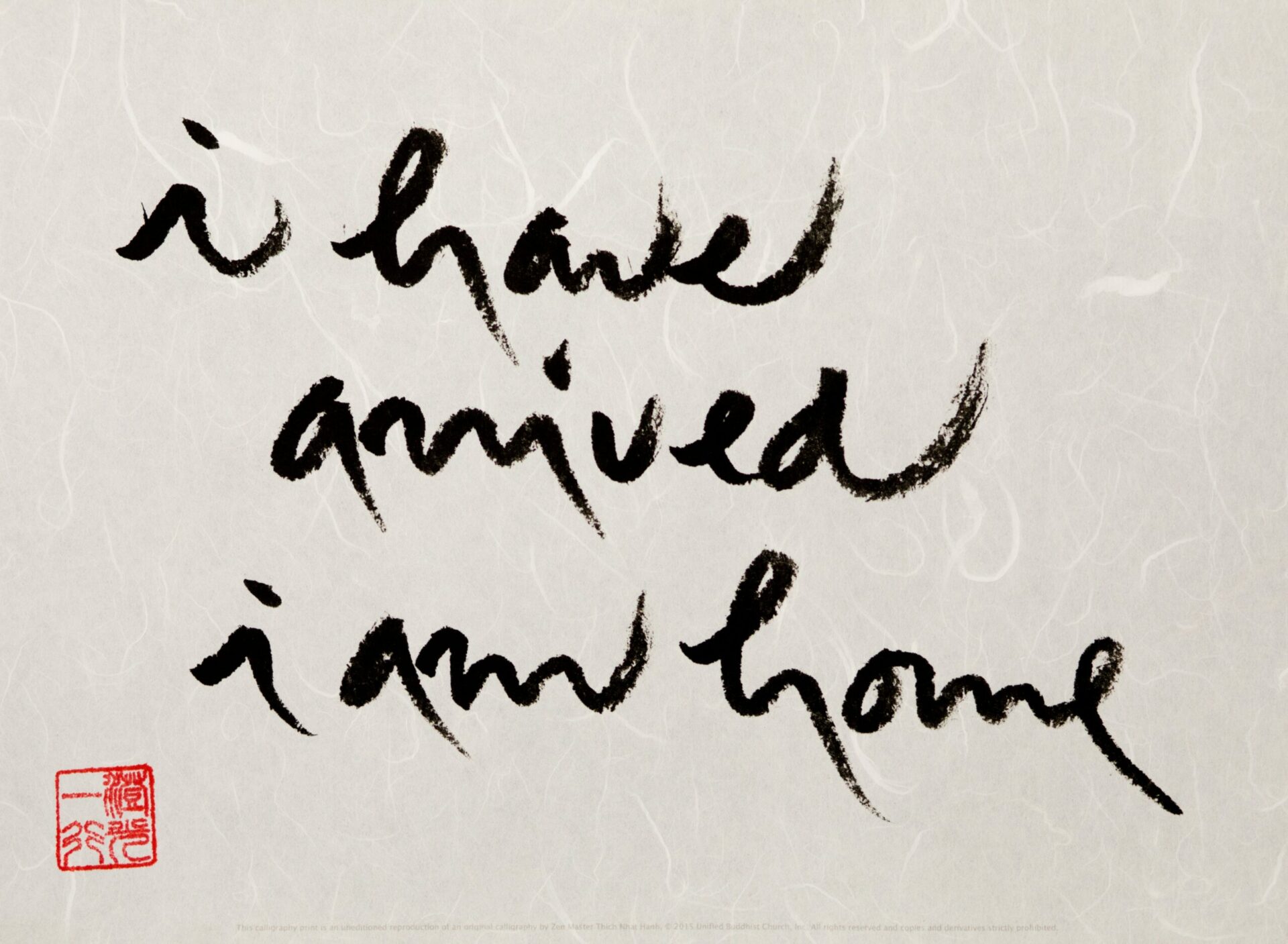
The practices of mindful walking, sitting, eating, stopping, looking deeply, and Dharma sharing14 enabled me to arrive in my body in the present moment. With the help of the teachings and practices, I began to see how much I was caught in the past and how my thoughts and feelings were feeding my depression.
The Buddha said: nothing can survive without food. Thầy’s teachings on mindful consumption,15 appropriate attention, interbeing, no separate self, and no-birth no-death brought me enormous relief. I realized just how much my suffering had been created by my wrong views16 about life and death. I believed that I had lost my sister forever, that she had “gone.” Thầy’s teachings on interbeing, continuation, and transformation helped me realize that she had not gone, she had just ceased to manifest in her usual form. She was still very much alive within me and still very much continuing to enrich others and the world.
A cloud never dies
Thầy’s metaphor of the cloud and rain opened my eyes to the reality of transformation and continuation. A cloud can never die. It can transform into rain or snow or hail, but it cannot die. It continues in the form of a river, as the ocean, as the cup of tea in my hands. When I look deeply, I can see the cloud in my tea. My sister had transformed but she hadn’t gone. This profound teaching on interbeing, as well as Thầy’s teachings on karma—that our true legacy are our actions of body, speech, and mind—helped me to see that my sister was still living on, not only inside me but inside everyone she knew and even those she had never met. A huge weight lifted from me, and love, joy, and gratitude took the place of sadness and despair.
This personal experience of healing was a testimony to the effectiveness of the Plum Village teachings and practices. I had found my teacher. I had found my community.
Thầy used everyday language, images, art, and poetry to communicate deep teachings and offer concrete practices which could be easily applied in daily life at home, at work, or anywhere at all, not just in the monastery.17 These practices really worked, and they worked quickly. Thầy would remind us: “You don’t need to practice for ten years to feel the benefit; the fruits of the practice are immediate.” Peace, joy, and happiness are available as soon as we start out on the path to peace, joy, and happiness.
There is no way to peace, peace is the way.
Thích Nhất Hạnh
Dwelling happily in the present moment
In Buddhism, the capacity to dwell happily in the present moment (Sanskrit: dṛṣṭa-dharma-sukha-vihāra) is a mark of successful spiritual practice. Watching my teacher unhurriedly pour and savor his tea, slowly and mindfully erase something from the whiteboard, or walk leisurely among the poplar trees, proved I was in the presence of someone truly exceptional, someone who knew how to fully inhabit his body and fully inhabit the present moment, as Thầy says, the only moment we have to live. This capacity is so rare to find. Most of us go through life sleepwalking, on automatic pilot, lost in worries about the future or regrets about the past. Thầy calls us to “wake up” from our torpor. He shows us that peace and freedom are possible when we come home to ourselves.
Spiritual practice and the importance of embodiment
Thầy walked the talk. To walk behind Thầy was to walk in another dimension—one of awe and wonder, peace and joy. Walking mindfully in his footsteps, time seemed to slow down, and everything came to life: the birds in the trees, dewdrops on green blades of grass, the blossoms of flowering trees. His presence and mindfulness generated healing, calming energy around him. I have never seen Thầy hurry, look stressed, or be unmindful. He was at peace—a master of awareness of the breath and body; all his movements were in mindfulness. His mind was clear, his energy calm.
I was struck by the way Thầy and the members of the community knew how to cultivate peace and joy. I observed their easy smiles, their joyful laughter, the brightness of their faces and eyes. They were aware of their footsteps, could follow their breathing, and stop their racing minds. They came back to the present moment to recognize what was there: the many conditions for happiness but also the suffering within. I wanted to be like that.
Thầy teaches us how to recognize and embrace our suffering tenderly, like a mother, allowing it to transform naturally. Relaxing our body and following the breath is the gateway to restoring peace and calm in body and mind, the prerequisite for peace and for seeing a person or situation clearly. Not letting our strong emotions cloud our view is the ground for Right Action (one aspect of the Noble Eightfold Path)—knowing what to do and what not to do to help the situation. Thầy realized that all of us—Buddhists and non-Buddhists alike—need to learn these skills for true peace to be possible. As a result of this insight, Thầy integrated mindfulness practices into all activities of daily life so that everyone can practice, regardless of faith, religion, or background.
I only have one style of walking, and that is walking meditation.
Thích Nhất Hạnh
Every step is made in mindfulness no matter where we go—to the restroom, from the car to the office, shopping, at the airport etc. “I can do this,” Thầy said and encouraged all his students to do the same. Thầy once handed the entire assembled community small business cards with “100%” stamped on them to remind us to invest 100% of our energy into becoming 100% mindful 100% of the time.
The practice of mindfulness is key
When Thầy discovered the teachings from Source Buddhism18 on The Full Awareness of Breathing19 and The Four Establishments of Mindfulness,20 his life and practice changed forever.21 These foundational teachings on awareness of the breath and awareness of the body, feelings, mind, and objects of mind were crucial to Thầy’s understanding of mindfulness and its role in healing and transformation, in gaining insight into ourselves and the nature of reality. They were the key to touching true peace and happiness. Thầy would continue to teach these sutras for the rest of his life, impressing on his students the importance of embodying the practice.
Only when we are embodied, when we are aware of what is happening in our body, our feelings, our mind, and our perceptions of the world around us, can we truly be the kind of force for positive change in the world that has a chance to succeed.
I practice daily to increase my awareness of my breath, my steps, and my body with all its different parts—from the cellular level (mitochondria, neurons, epithelial cells) to the organs and musculoskeletal system, the brain, and nervous system. I do the same with my feelings, my thoughts and states of mind, and my perceptions of the world around me. I become familiar with them, name them, learn to relax my body, calm down my strong emotions, and continue to question my perceptions. Then I help others to do the same.
Spiritual practice as a necessary foundation for activism
National and international politics, economic, social, racial, educational, public health and environmental policies have their part to play, but mindfulness is essential if we are to know what actions to take to address extremism, discrimination, violence, fear, and degradation of the planet. Thầy taught us that knowing how to recognize and take care of strong emotions like anger, hatred, and fear is imperative if we are to cultivate Right View, nondiscrimination, non-fear, understanding, and compassion.
Man is not our enemy. Our enemy is hatred, anger, ignorance and fear.
Thích Nhất Hạnh, “Recommendation”
We need to know how to calm ourselves so we can see the situation more clearly, correct our wrong perceptions, and know what appropriate action to take.
How do I continue Thầy’s teachings?
As a Plum Village Dharma teacher, I help carry Thầy’s teachings into the future. I share the practice of mindfulness with others,22 whether Buddhist or not. These are life skills not limited to a particular religion, culture, or faith. I train myself every day in the practice of mindfulness. I don’t rely on Thầy’s word alone, I use discernment based on my lived experience. Just as the Buddha admonished his students,23 Thầy also encouraged us not to blindly believe what he says but to test it with our own experiences, to “practice intelligently.”
As a teacher I can only share what I have realized. I offer my understanding born of experience. Everything else is just hypothetical, theoretical, or speculative. Thầy encouraged us not to engage in metaphysical or speculative discourse, but to keep the practices concrete, updating them as needed to remain relevant to our time and applicable for all.
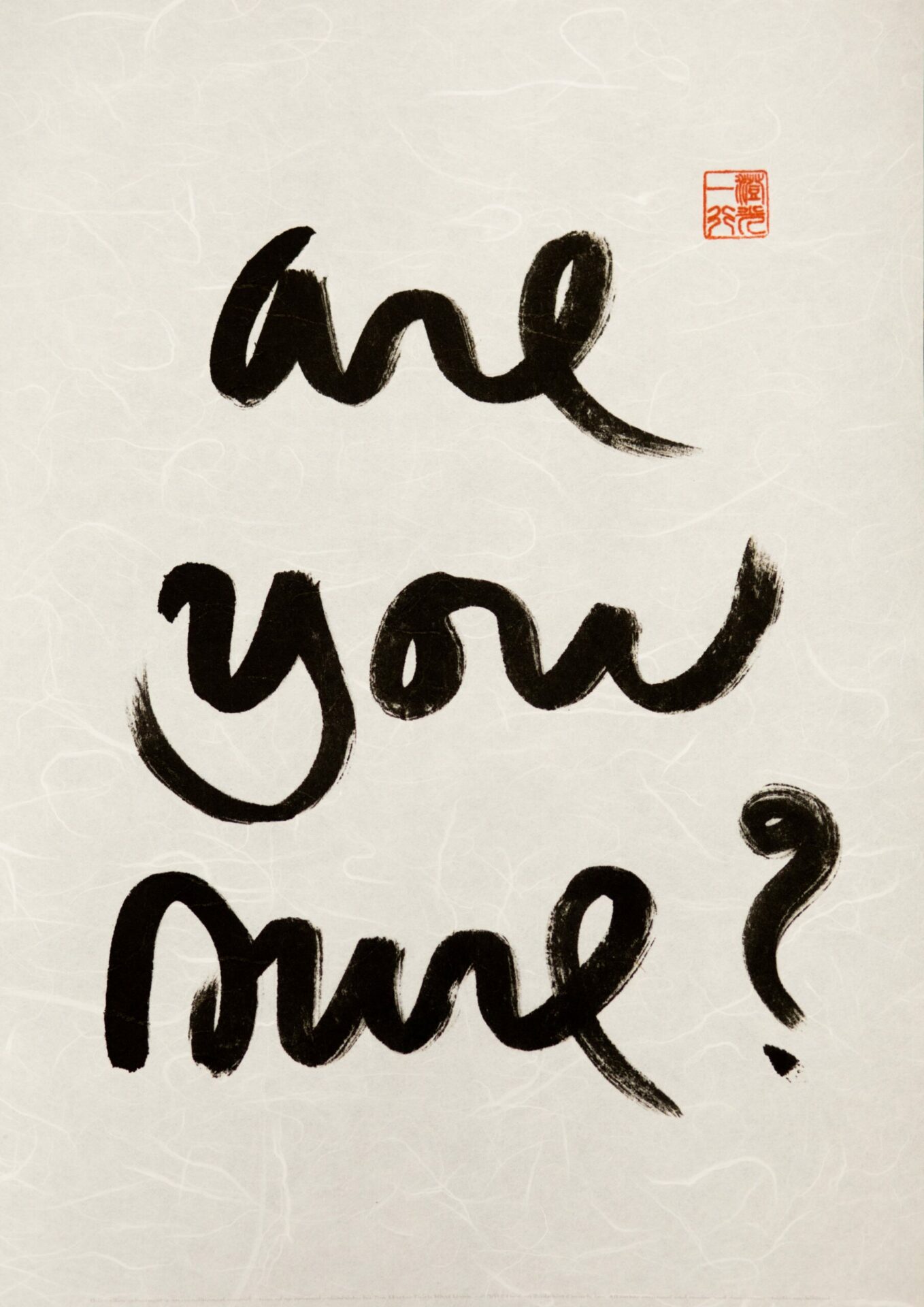
Inspired by Thầy, I question my perceptions and I encourage others to do the same. We know that the subject of perception and the object of perception arise at the same time. What we see depends on what is in our consciousness. If we have strong seeds of fear in our store consciousness, we see danger. If we have love in our hearts, we see friends.
A paradigm shift: Homo conscious
Thầy recognized that what is needed to face the challenges, the crises, of our time is a shift in consciousness. We need to become Homo conscious; we need to evolve beyond Homo sapiens and Homo economicus. Thầy knew that scientific and intellectual knowledge alone is not enough. We “know” what we need to do to reduce climate change and planetary devastation, but we do not do it. Why? Because our awareness is limited. We do not fully realize the ultimate reality of interbeing,24 the interconnectedness of all beings. We no longer see the Earth as our mother, the trees as brothers, the ocean as our sister, the sun as our father. We do not understand that harming the Earth is harming ourselves. In killing humans, plants, or animals, we kill ourselves. Only when the suffering touches our heart deeply enough will we be able to change. We need to feel the suffering of others and of other species.
Understanding interbeing
The practice of mindfulness helps us to develop this awareness. With sustained mindfulness and concentration, our awareness grows. Bit by bit we regain sovereignty of our own bodies and feel truly alive. We come home to ourselves and our hearts begin to open. This is the foundation for connection with others and with the Earth. When we are able to transcend our dualistic way of thinking and looking at the world, we understand that “you are in me and I am in you,”25 that “my happiness depends on your happiness,” that “your suffering is also mine,” and that the environment is not outside of us—we are the rivers, the oceans, the air, the minerals, the plants, and the animals. When we understand this, then we will naturally want to protect each other and our precious planet. We will want to stop eating our son’s flesh.26
A collective awakening
Thầy advocated the need for a shift in the collective consciousness. Only a collective awakening can save us, and this begins with individual awakening, which is the fruit of our practice. The more we practice mindfulness and concentration, the more insight we gain. Together we can build a better future, but alone we cannot do much, hence the indispensability of practicing together with a Sangha. When a community27 practices mindfulness, the collective energy permeates everyone and makes growth and transformation faster and easier.
[Thích Nhất Hạnh] shows us the connection between personal, inner peace, and peace on Earth.
His Holiness the Dalai Lama
The way out is in
As religious leaders, teachers, and spiritual practitioners, it is our duty to practice. We need to recognize, embrace, and transform our suffering, heal our wounds, and cultivate love, understanding, acceptance, and compassion for ourselves so that we can then cultivate love, understanding, and compassion for others. We embody the practice so we can help others do the same. I feel this is the best contribution to the world I can make, and all my efforts are towards this end. This is how I bring Thầy into the future. By practicing mindfulness, I do my part to contribute to a collective awakening, one heart and mind at a time. This gives me hope and my life a sense of meaning and purpose.
If we all practice like this, Thầy’s legacy will live on. Like the cloud that becomes rain, it may change form, but it can never die.
There’s a revolution that needs to happen and it starts from inside each one of us. We need to wake up and fall in love with Earth. We’ve been Homo sapiens for a long time. Now it’s time to become Homo conscious. Our love and admiration for Earth has the power to unite us and remove all boundaries, separation, and discrimination. Centuries of individualism and competition have brought about tremendous destruction and alienation. We need to reestablish true communication—true communion—with ourselves, with the Earth, and with one another as children of the same mother. We need more than new technology to protect the planet. We need real community and cooperation.
Thích Nhất Hạnh’s statement on Climate Change for the United Nations
1 Thích Nhất Hạnh (1926-2022), pronounced Tik – N’yat – Haan, is a monastic Dharma name. “Thích” signifies “Buddhist monastic” and “Nhất Hạnh” means “One Action.” Thích Nhất Hạnh belongs to the forty-second generation of the Linji School and the eighth generation of the Liễu Quán Dharma line.
2 “The father of mindfulness,” The Irish Times, April 10, 2012. https://www.irishtimes.com/news/health/the-father-of-mindfulness-1.498724
3 Thầy visited Trappist monk Thomas Merton at the Abbey of Gethsemani, Kentucky, US, in 1966. In their meeting, the two men found they had much in common. Merton said of Thầy: “Thích Nhất Hạnh is more my brother than many who are nearer to me in race and nationality, because he and I see things the exact same way.”
4 Bodhisattvas in Buddhism are great beings on the path of awakening for the benefit of all beings; someone of exceptional awareness, service and compassion, comparable to the notion of saints in Christianity.
5 “Thich Nhat Hanh believed that Buddhism should be a force for change,” The Economist, Jan 29th, 2022. https://www.economist.com/obituary/2022/01/29/thich-nhat-hanh-believed-that-buddhism-should-be-a-force-for-change
6 As an example, Thầy translated sutras and liturgy from Sanskrit, Pali and classical Chinese into Vietnamese; he modernized the curricula for monks at An Quang Institute and Van Hanh University in Vietnam, introducing subjects that were previously not taught such as modern languages, literature, philosophy, and history. In 2003, he released a revised version of the Dharmagupta Pratimoksha (monastic code) after taking out what was no longer relevant and introducing new precepts more appropriate to our times, such as those pertaining to the use of modern technology and the internet. Thầy revolutionized the status of women within the monastic order, giving nuns equal status to monks with equal rights and equal say.
7 Alongside practices of mindful breathing, sitting, walking, eating, and working, Thầy was creative in devising new practices and movements: walking meditation everywhere you go, stopping with the bell, practice songs and gathas, Deep Relaxation, the Ten Mindful Movements, Touching the Earth contemplations, Dharma sharing, Beginning Anew, happiness meetings, be-ins, Happy Farms, Wake Up movement for young adults, Wake Up Schools and training, and family, BIPOC and LGBTQIA+ retreats etc.
8 “Thầy,” pronounced /tei/ or /tai/ means “teacher” in Vietnamese. This is how Thầy’s followers affectionately refer to him.
9 At the turn of the millennium, Thầy proposed the Plum Village version of The Five Mindfulness Trainings as a viable global ethic. UNESCO’s Manifesto 2000 was largely based on The Five Mindfulness Trainings.
10 Plum Village is the short name of the meditation and mindfulness practice center in south-west France that Thầy founded in 1982, now a part of the worldwide Plum Village Community of Engaged Buddhism. “Plum Village” refers both to this center as well as to the practice tradition based on Thích Nhất Hạnh’s teachings.
11 We can feel this spiritual energy not only in a meditation hall but also in a church, a cathedral, a mosque, a synagogue, a temple, on top of a mountain, or deep in the woods—wherever embodied spirituality is practiced.
12 Discourse on the Four Establishments of Mindfulness, Satipaṭṭhāna Sutta, Majjhima Nikaya 10, https://plumvillage.org/library/sutras/discourse-on-the-four-establishments-of-mindfulness.
13 “I have arrived, I am home” is a central teaching in the Plum Village tradition. It expresses the notion of dṛṣṭa-dharma-sukha vihāra (Sanskrit)—the capacity of dwelling happily in the present moment.
14 A healing Plum Village listening circle practice. People can share their difficulties while others in the circle listen deeply or share what helped them in a similar situation. The facilitator may also offer teachings and practices which may be of help.
15 Awareness of what we consume—edible foods, sense impressions, volition, and consciousness. The thoughts, beliefs, films, music, and conversations we consume influence our way of thinking, our feelings, our perceptions, and our consciousness.
16 “Wrong view” is the counterpart to “Right View,” according to Thầy—the most important of the eight practices of the Noble Eightfold Path in Buddhism (Sanskrit: āryāṣṭāṅgamārga), the path that leads to happiness. The other practices are: Right Thinking, Speech, Action, Livelihood, Diligence, Mindfulness, and Concentration, all of which lead to Right View. Right View is the view that transcends all views—views of right and wrong, of birth and death, of being and non-being—all dualistic thinking.
17 Some examples include mindful breathing, walking, working, eating, sitting, driving, tooth-brushing, cooking, tea drinking, the mindfulness bell, and many practices to help maintain or restore our relationships.
18 Source Buddhism refers to Theravada, the Way of the Elders.
19 Ānāpānasati Sutta, Majjhima Nikāya 118
20 Satipaṭṭhāna Sutta, Majjhima Nikāya 10
21 Thầy was introduced to the practice of mindful breathing and walking from a text he read while still a novice at the Báo Quốc Buddhist Institute, 1946-49. The Minor Stopping and Looking Deeply by Master Zhiyi of the Tiantai School became the basis for Thầy’s practice of mindfulness of breathing (he already learnt mindfulness as an aspirant and novice at Từ Hiếu). Thầy applied this practice of awareness of the breath and steps to heal himself from his serious illness in the late 1950s. He realized that counting his steps and combining his steps with his breathing was an effective way to stay relaxed and focused, and not think about anything else. Later, while teaching at the École Pratique des Hautes Études of the Sorbonne in Paris in the early 1970s, Thầy had access to libraries with many rare documents concerning Vietnamese Buddhism. He discovered the Preface to the Anapananusmrti Sutra by Master Tăng Hội and this led him to look deeper into the sutras on mindful breathing in the Pali and Chinese canons.
22 Every year Plum Village monastics hold retreats for thousands of people all over the world, both in-person and online. We also offer retreats on tour on six different continents, from Africa to Australia, Asia, Europe, and North and South America.
23 Kesamutti Sutta, Aṅguttara Nikāya 3.65
24 Most western societies seem to have forgotten this ancient wisdom. We have become cut off from our roots, from our animal, plant, and mineral ancestors.
25 “You” here refers to all phenomena, including the four elements, the three times, animals, plants, minerals, and people.
26 Puttamaṁsa Sutta, Saṁyutta Nikāya 12.63
27 “Community” can be our family, our school, our workplace, or any spiritual community.
Written at Magnolia Grove Monastery, Mississippi, US on July 15, 2023.
